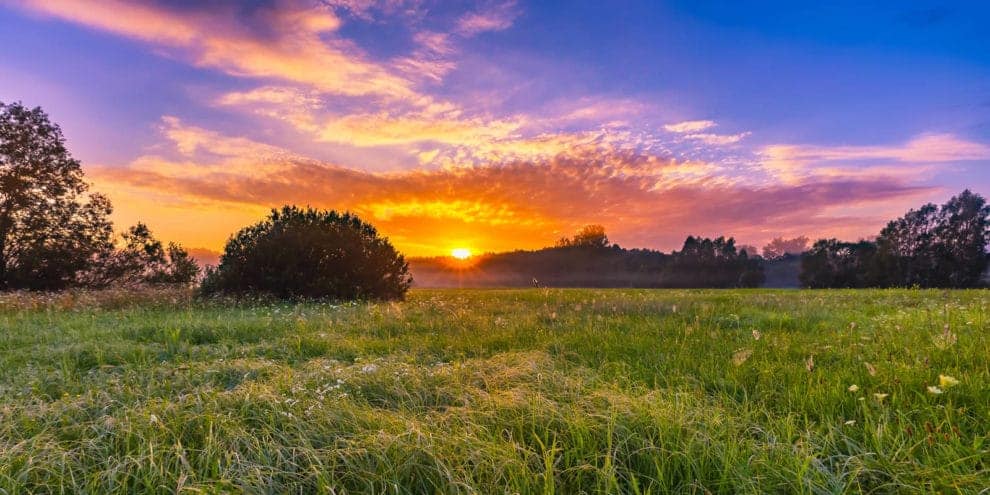“Are there risks inherent to owning rural land?” I believe there are risks associated with owning any type of asset. Stocks rise and fall based on any number of crazy factors. Antique cars can be damaged by rust.
Plumbing in your house is subject to stopping up, but you would never consider owning a home without indoor plumbing.
There are risks associated with owing land, but I believe that in comparison to other asset classes, undeveloped rural land is a relatively low risk investment. Here are a few things that can damage your rural property.
- Wildfires (Prone to damage timber, crops, and improvements on a property)
- Wind (Tornadoes, hurricanes, typhoons, straight-line winds, and a derecho)
- Flooding (Can lead to erosion of topsoil and nutrients, open sink holes, and changing of the property features and boundaries)
- Winter storms (Heavy amounts of snow and ice can damage timber, down utility lines, and lead to flooding during a thaw)
- Insects and pests (Pine beetles, locusts, beavers, wild hogs, deer, kangaroos, and a host of other animals can wreak havoc on timber, crops, and the natural resources of the land)
- Invasive species (Privet, mimosa, cogon grass, kudzu, hydrilla and many others)
- Meteorite (Not much you can do about this, but the largest natural disaster in Alabama was caused by a meteor hitting what is now the city of Wetumpka)
- Drought (Stresses land, water resources, timber, and destroys crops)
These are the major risks that threaten rural land. They are possible, but not likely to damage most properties in a given area. As with owning any other asset, you can take measures to Prevent, Mitigate, or Transfer the risks to your property.
Prevention– You can help prevent the damage associated with wildfire by putting fire lanes around the perimeter of your timber or pine stands and doing controlled burns to reduce the fuel load. You can build levies or berms to help keep water in the desired course.
Mitigate– You can treat invasive species with chemicals or use fire to control their spread. Pine beetles can be controlled by removing standing timber in the immediate vicinity of infested trees. Having a forester inspect your timberland periodically helps you identify and head off potential problems.
Transfer– Farmers will often purchase crop insurance in the event of drought or other natural disaster. Flood insurance is available for structures in areas prone to flood. Some companies offer insurance policies for standing timber should they be damaged by fire, wind, or other disaster.
As I mentioned earlier, there are risks associated with owning anything.
The mortality rate for all livestock is 100%; it is simply whether it will happen on your terms or Mother Nature’s terms. However, cattle farm owners do an excellent job tending to their herds daily, feeding them, vaccinating them routinely, and assisting with birthing. Those are the steps they must take to ensure a healthy herd and a return on their investment.
Rural land owners can use the many resources available to them to help identify, prevent, mitigate and transfer the risks associated with owning land. Almost every region of the country has a local office for the Farm Service Agency (FSA), United States Department of Agriculture (USDA), Natural Resource and Conservation Service (NRCS), and Forestry Commission. Each state has a land grant university that has a Cooperative Extension service that will provide comprehensive information and resources for landowners for protecting and maximizing their land.
There are also a host of other public and private organizations dedicated to serving land owners, such as : Farm Bureau, state forestry associations, crop production services, and many others.
This content may not be used or reproduced in any manner whatsoever, in part or in whole, without written permission of LANDTHINK. Use of this content without permission is a violation of federal copyright law. The articles, posts, comments, opinions and information provided by LANDTHINK are for informational and research purposes only and DOES NOT substitute or coincide with the advice of an attorney, accountant, real estate broker or any other licensed real estate professional. LANDTHINK strongly advises visitors and readers to seek their own professional guidance and advice related to buying, investing in or selling real estate.










Well-written, Goode. May all your land be spared from meteorites forever.
Farmland’s biggest risk is drought, then disease and pests. Illiquidity is a risk of needing to hold for long periods of time. Alternative investments in agriculture such as feeder cattle offer less liquidity risk, but have many of the same risks: increases in feed costs due to drought, disease and pests.